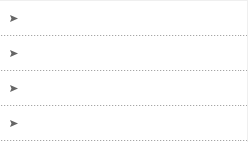The Ottawa-Shanghai Joint School of Medicine (OSJSM) Admissions
Committee composed of community members, clinicians and student
members interviewed 32 Shanghai Jiao Tong University School of
Medicine (SJTUSM) PreMedicine program students over two days. The
interviews revealed the joint school’s unique requirements for
choosing future doctors. “We are not simply selecting straight-A
students, we are looking for those who also possess the humanistic
side.”, one Committee member told the reporter.
“Tell me about the biggest crisis you have met? And how did
you overcome it?”, “If you tell me the biggest difficulty you have
ever had was on the school sports team, I cannot ask you to show us
your moves because we don’t have a sports field ready to go. I will
instead ask you about how you managed that difficulty.” Mr. Maury
Hill is very humorous. But when it comes to interviews he is very
serious, he said, “We need to see how the student is really like
and experience has shown that if we ask follow up questions to get
a better understanding than we can help the candidates reveal their
true potential.”
This joint medical school is quite a unique endeavor. The
Ottawa-Shanghai Joint School of Medicine is co-established by
Shanghai Jiao Tong University School of Medicine and the University
of Ottawa Faculty of Medicine (UO, FoM). This four undergraduate
medical education program is the one and only joint program
approved by the Chinese Ministry of Education. It consists of a 1
year pre-med program which offers basic science and humanities
courses, followed by 4 years of integrated undergraduate medical
curriculum. At the end of the pre-med year during which students
are taught by international professors from the UO and the SJTUSM,
candidates will be invited to an interview based on their
PreMedicine program’s GPA. Successful candidates will enroll in the
OSJSM UGME program. The importance of the interview cannot be
overplayed.
“We won’t ask you how many bones the human body has or what the
largest organ of the human body is. The interview is more like a
chat, focusing on primarily why you want to be a doctor.” Dr.
Barbara Power, Director of Physician Skills Development at the UO
told us.
“Communication, empathy, cooperation, conflict-resolution,
resilience, critical thinking are all the qualities that patients
want to see in their physicians. We are looking for the future
physicians who can connect with people.”
The four Canadian interviewers represent both the medical world and
the community served by the physicians. Dr. Barbara Power is a
geriatrics physician at the
Ottawa Hospital; Dr. Kendall Noel is a family physician affiliated
with the Montfort Hospital; Mr. Maury Hill and Dr. Marc Ekker
represent the community. Mr. Hill is a safety management expert,
and Mr. Ekker is a neuroscientist at UO. The inclusion of
community members as interviewers is a long standing
tradition at the University of Ottawa.
What is also very interesting is that students are also invited to
join the Admissions committee as members interviewing potential
candidates. The students can examine different aspects of the
candidate compared with the other members of the interview team.
The physicians focus is on professionalism. The students are
selecting who they are going to work with in the future. And the
community members are choosing future doctors from a “consumer”
perspective.
The University of Ottawa’s Faculty of Medicine has been doing
interviews for more than 25 years and is continuously adjusting the
process according to new research findings.
Why does University of Ottawa attach so much importance to the
interview? Mr. Hill said, “We are choosing doctors who are going to
treat us in the future.” These interviewers are recruited by UO,
and are volunteers.
The interview is just the beginning for the joint medical education
program. Chancellor CHEN Guoqiang of Shanghai Jiao Tong University
School of Medicine said that by aligning the Chinese medical
education model with the Canadian medical education model, it is
hoped that it will promote local (Chinese) medical education
reform. And the OSJSM is a pilot program for a series of new
medical education approaches.





